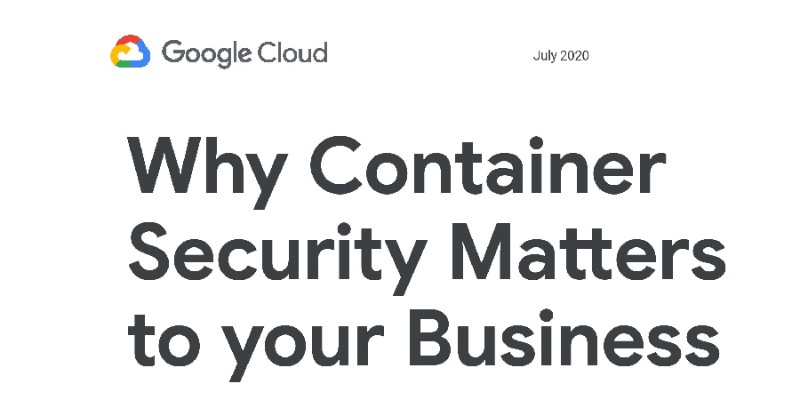Why Container Security Matters to your Business
Published on 18 May 2021

According to a study conducted by Forrester Consulting, 86% of technology leaders plan to prioritize the development of containerized applications[1]. The use of containers to develop and deploy cloud-native applications has increased significantly over the past few years. These days, containerized applications are used to deliver WiFi, for mobile games, banking services, etc. Today, business leaders have to make decisions regarding the use of containers. These decisions will have a significant impact on cost, development, deployment, and ultimately the success or failure of an application. Hence, it is important to have a clear understanding of what containers are and their security. Download this ebook by Google Cloud to learn the fundamentals of container security. so that you can make the right decision needed to help keep your business safe.
What is a container?
A container is a term used to describe packaged application code. When an application's code and dependencies are packaged in such a way that it can run on varying computing environments without breaking, it is said to be containerized. One of the most common challenges with the development and deployment of cloud-native applications is portability. Typically applications are developed and tested in specific computing environments. The language, runtime, library versions, package, operating systems, etc can be different in computing environments when the code is moved to another testing environment or handed over to another developer. The inconsistencies in these environments can cause the application to break. Building applications in containers helps address this problem, as the application is isolated
See also: Anthos for application management in hybird & multi-cloud environments
Containers solve the portability problem by isolating the application and its dependencies so they can be moved seamlessly between machines. A process running in a container lives isolated from the underlying environment. You control what it can see and what resources it can access. This helps you use resources more efficiently and not worry about the underlying infrastructure.
Though there are several advantages to containerized development, it is not without flaw. A container is a boundary but that boundary has limitations. Containers can be compromised through various attacks. Misconfigurations or unpatched components can leave containers vulnerable. Bad actors can exploit such vulnerabilities and gain access to your workloads, computing resources and can even recreate your application along with its data somewhere else.
Benefits of containers
Containers make it possible for you to patch infrastructure on a continuous basis, without downtime. If a new vulnerability is discovered it can be patched quickly and without delay. There are increased possibilities for automation. Security teams can leverage containers to make patching in the production environment, safer, faster, and easier. Download this eBook by Google cloud to get a better understanding of containers and why you should choose them. Subscribe to Whitepapers.online for quality resources in IT, Fintech, Martech, and HR Technologies.
Sources:
1. Aug 2020, "Container Adoption Statistics and The Future of Containers", Capital One, [available online] available from: https://www.capitalone.com/tech/cloud/container-adoption-statistics/ [accessed May 2021]
